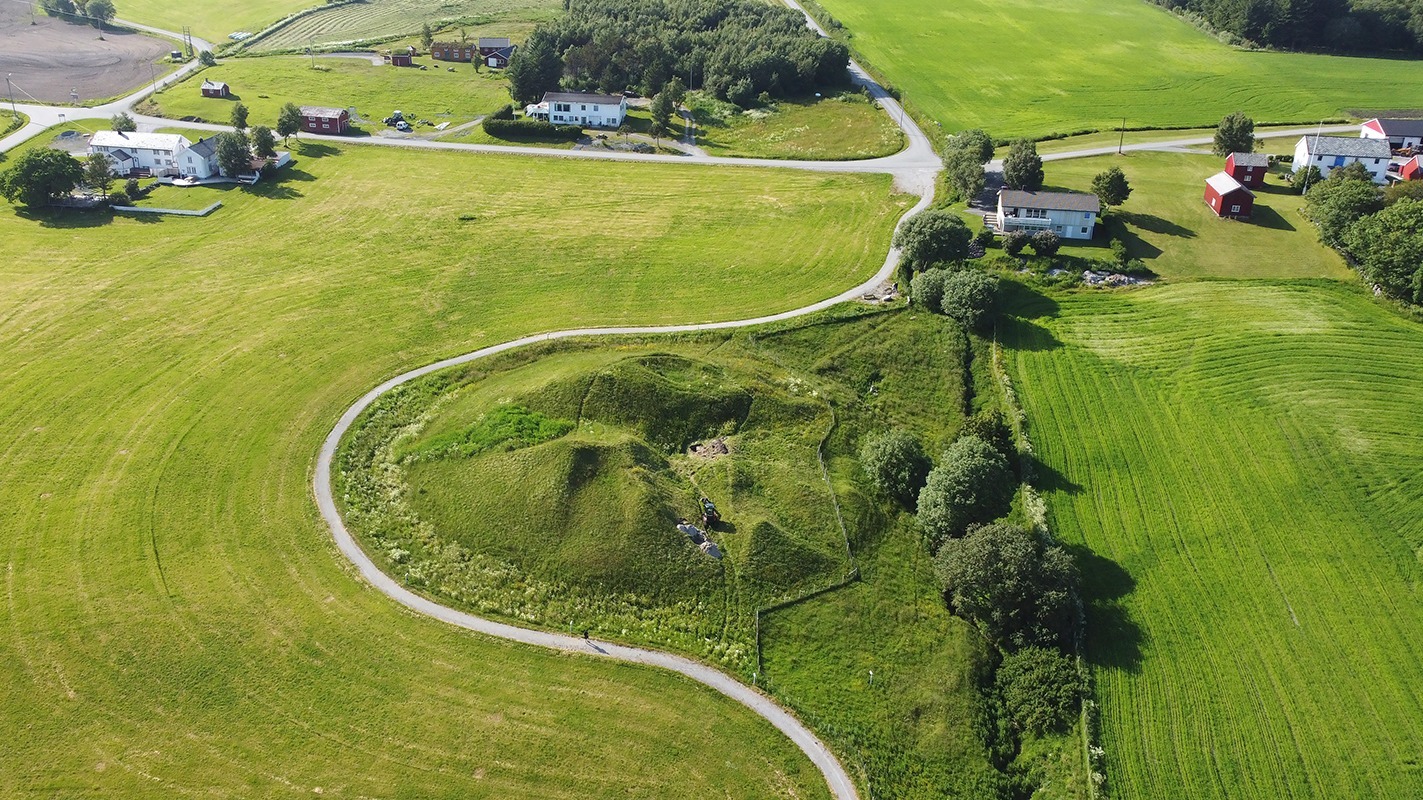Oldest known ship burial discovered in Norway predates Vikings
Rivets found at the site hint that the burial mound once housed a pre-Viking ship.

A large, grassy hill in Norway known as the Herlaugshagen burial mound was likely the site of a pre-Viking ship burial, a new analysis finds.
Archaeologists have long wondered whether the oversize mound in Leka, a municipality in central Norway located along a known centuries-old shipping route, once housed a ship. This summer, researchers conducted surveys at the coastal site and discovered several large rivets that would have held the vessel together, as well as wooden remains that are likely from the ship, according to Norwegian SciTech News, a news outlet that provides coverage for the Norwegian University of Science and Technology (NTNU) and the Foundation for Industrial and Technical Research (SINTEF).
"The sizes of the ship's rivets and the preserved wood around several of the rivets show that the preservation conditions are good," Geir Grønnesby, an archaeologist at NTNU who led the surveys, told Live Science in an email. "This is the largest burial mound in Trøndelag (Central Norway) and one of the largest in Norway."
With a diameter of about 197 feet (60 meters) and a height of 23 feet (7 m), the mound could easily have contained a ship, the researchers concluded. (In comparison, most regional burial mounds are much smaller, measuring about 26 to 39 feet (8 to 12 m) in diameter, Grønnesby said.
After radiocarbon dating the preserved wood, archaeologists determined that the ship was constructed around A.D. 700, according to Newsweek. This means the ship predates the Viking Age, which spanned 793 to 1066.
Related: Seemingly 'empty' burial mound is hiding a 1,200-year-old Viking ship
"The unique thing about the mound is the early dating of a ship burial," Grønnesby said. "The oldest ship burials have been dated to the end of the 8th century. The find helps to close the gap between the Scandinavian tradition of burying people in ships and the famous Sutton Hoo find in England," which dates to the seventh century.
Get the world’s most fascinating discoveries delivered straight to your inbox.
Local records indicate that the site had been excavated multiple times during the 18th century, and written accounts show that a number of artifacts have been unearthed there, including part of a wall, iron nails, a bronze kettle, animal bones, a layer of charcoal and a seated skeleton with a sword. Unfortunately, sometime in the 1920s, all of these items were lost, according to Norwegian SciTech News.
Despite these losses, the new research offers archaeologists insight into the history of ship burials in this region.
"It is also important that the discovery was made further north than many of the previously known monumental ship burials," Grønnesby said. "This also tells us that maritime expertise and contact over large areas was standard long before the Viking Age."
However, more research is necessary to paint a picture of what the vessel may have looked like and its intended purpose.
"Since we have not excavated the entire ship, it is difficult to say what it was used for," Grønnesby said. "The ships we know of are considered ships for warriors used to plunder and warfare. However, we know that the exchange of goods must have been extensive at this time, and the most logical thing is that the goods were transported by ship along the coast."
Jennifer Nalewicki is former Live Science staff writer and Salt Lake City-based journalist whose work has been featured in The New York Times, Smithsonian Magazine, Scientific American, Popular Mechanics and more. She covers several science topics from planet Earth to paleontology and archaeology to health and culture. Prior to freelancing, Jennifer held an Editor role at Time Inc. Jennifer has a bachelor's degree in Journalism from The University of Texas at Austin.


